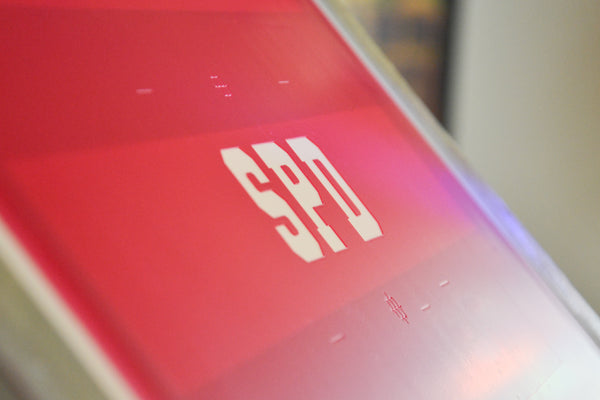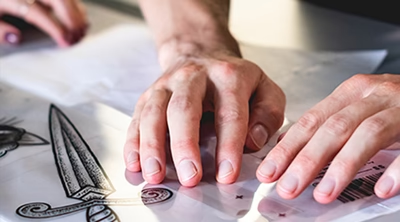The Essential Guide to Emulsion Coating for Screen Printing
What may sound like an age-old technique, screen printing has now evolved into one of the most excellent methods for creating custom designs on varied materials. In the whole process, one thing that binds it all together is the use of emulsion. This light-sensitive liquid coats the screen and helps in creating a stencil. In this guide, we will discuss the emulsion coating on the screen and how to prepare screens with the coating.

What is Emulsion Coating & its Importance in Screen Printing?
It is the process of coating a screen with a light-sensitive emulsion that forms a stencil for the ink to flow through while printing. The screen is then exposed to UV light to expose the design or pattern. For the purpose of printing the intended picture onto different materials, including fabrics, paper, and plastics, this stencil is essential.
Emulsion coatings guarantees printing accuracy and precision, making it possible to reproduce complex patterns and brilliant colors consistently and clearly.
Different Types of Emulsion Coating
Not all screen-printing processes use the same type of emulsion. It all depends on multiple factors like the source of light, the time limit of the job, or the type of printing. So, here are the different types of emulsion coatings that are most commonly used:
Water Resistant Emulsion
If you plan on using water-based or discharged ink for screen printing, water-based emulsion will help you better than ordinary ink. This type of coating ensures that the design stays for a longer term and crisp over time. In fact, you can also find plenty of different types under the water-resistant type that vary according to the level of resistance.
Photopolymer Emulsion
The photopolymer emulsion is a premixture that can be used straight out of the bucket. It has a narrow exposure latitude and leads to high emulsion over mush ratio. Remember to use an LED exposure unit with a vacuum top to get optimal results. Do remember photopolymer emulsion freezes quickly, so during wintertime, buy adequately.
Capillary Film
Capillary film also known as “direct film”, has a specific amount of thickness that helps in providing great resolution and definition. It is relatively easier to use and is perfect for use in long runs. But there is a drawback: it is not as durable as “direct emulsion.”
How to Prepare Screens for Emulsion Coating?
Getting your screen ready for coating is vital for ensuring the prints' quality and durability. Here is a step-by-step guide on how to go about it effectively:
Clean the Screen: To remove dust or high density plastisol ink, clean the screen completely. Use a mild detergent or screen cleaner and a soft brush to clean all the sides of the screen.
Degrease the Screen: Remove any oils or residues that could create hindrances with the emulsion adhesion. Use a degreaser formulated explicitly for screen printing, apply it evenly on all sides of the screen, and rinse completely with water.
Dry the Screen: Allow the screen to air dry thoroughly in a dustless environment. Avoid using compressed air, which can bring dust particles onto the screen.
Prepare the Emulsion: Mix the emulsion according to the manufacturer’s instructions. Ensure the emulsion is well mixed and there are no lumps or clumps.
Coat the Screen: Place the screen on a level, solid surface, print side facing down. Pour an emulsion line down the screen's bottom edge, then use a scoop coater to distribute it evenly across the screen in one smooth stroke. Repeat the technique on the other side of the screen to achieve dual coating.
Dry the Coated Screen: Allow the screen to dry horizontally in a dark area. Provide adequate airflow to help in the drying process and prevent contamination.
Expose the Screen: Once the emulsion coatings are dry to the touch, they are ready for exposure. Place your artwork or film positive over the screen and put it under UV light using a light table or exposure unit.
Safety Considerations in Emulsion Coating
Here are a few considerations that one should keep in mind while applying emulsion:
Ensure adequate ventilation to reduce exposure to fumes.
Wear gloves, safety glasses, and a respirator as personal protective equipment.
Follow the manufacturer's instructions for chemical handling and storage.
Avoid prolonged skin contact with emulsion; wash immediately if contact occurs.
Use safety glasses or goggles to safeguard your eyes from splashes.
Exercise caution when handling equipment to prevent accidents.
Promptly clean up spills and follow proper disposal procedures.
Conclusion
Mastering emulsion coating on the screen is critical for producing high-quality screen prints. Understanding the many types of emulsions and following correct preparation and safety precautions gives the best outcomes. With careful attention to detail and commitment to the best techniques, you may consistently and securely produce magnificent prints in your screen-printing endeavors.
.webp)


Comments
Post a Comment